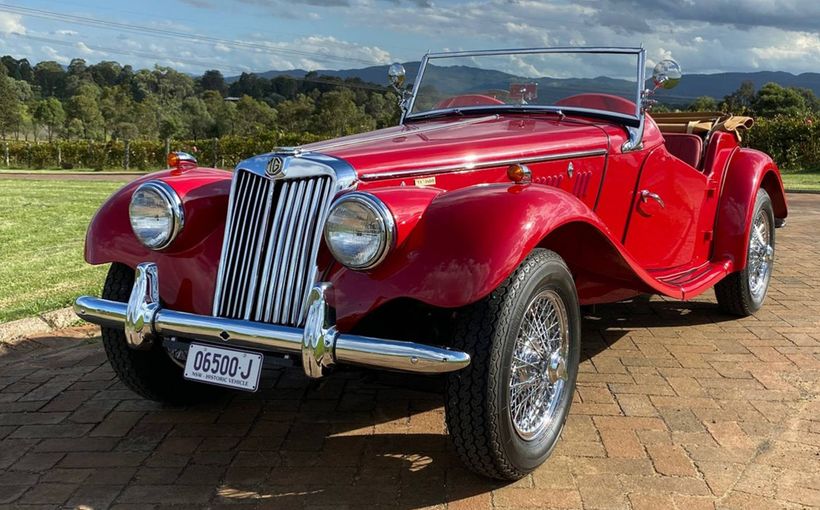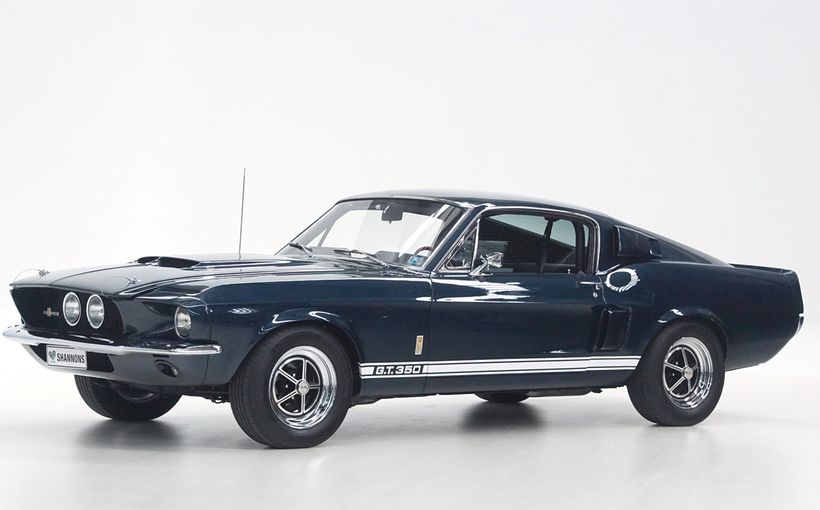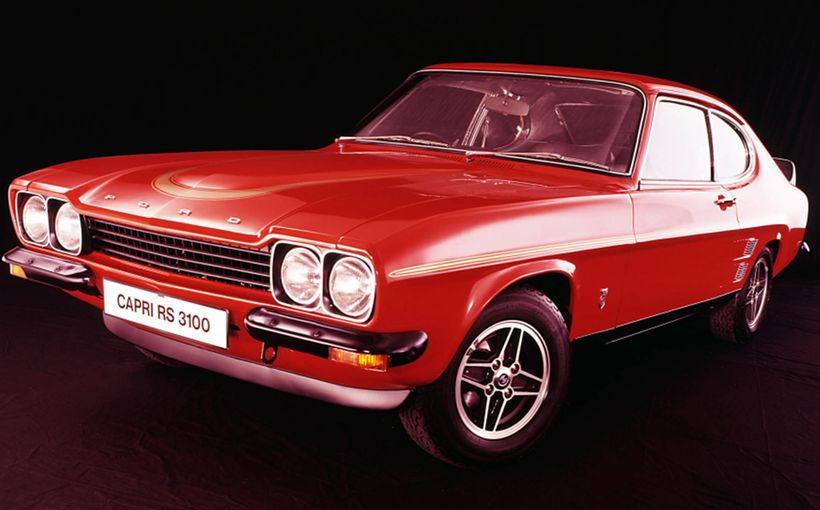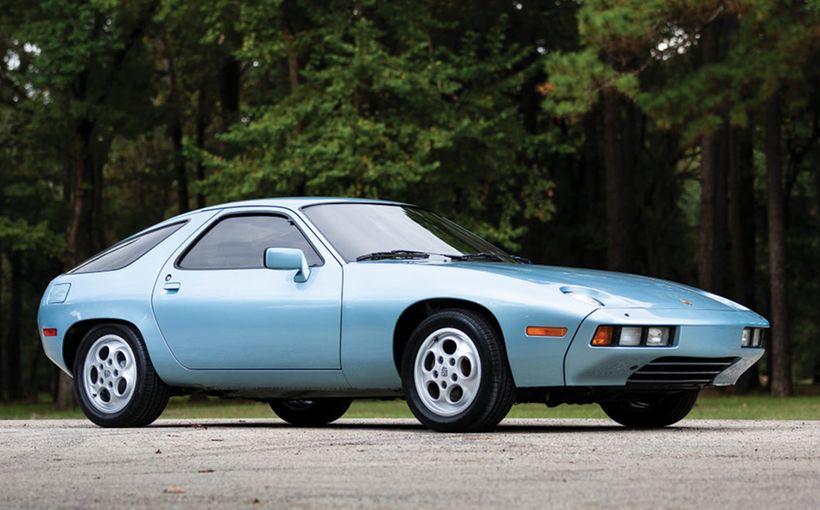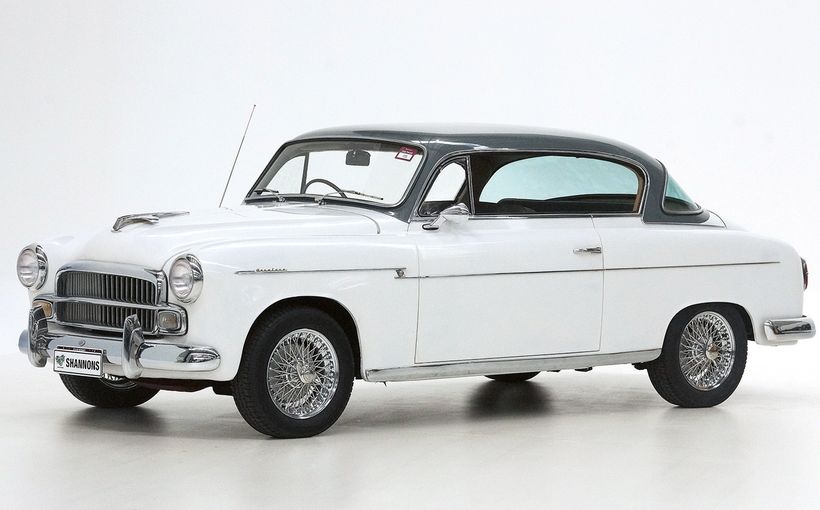MG TC-TD-TF: how a tiny British sports car won the first post-war AGP

Arguably the most famous and cherished MG sports cars were the iconic T series Midgets produced by the Abingdon manufacturer from 1936 to 1955, which included TA, TB, TC, TD and TF models. The T series’ greatest post-war success in Australia was unquestionably Bill Murray’s victory in the 1947 Australian Grand Prix at Mount Panorama, Bathurst.
Murray’s victory in a stripped-down MG TC was a thriller, as he only took the lead on the last lap in a 38-lap 241km race run to Formula Libre rules, which allowed a wide variety of makes and vehicle types to compete head-to-head.
Formula Libre was favoured in the early days of post-war motor racing in Australia, when indulgences like exotic purpose-built racing cars were in short supply. So, with necessity being the mother of invention, competitors and race organisers improvised to create entry lists from whatever vehicles were available.

The end result, as we saw in the first post-war AGP, was an intriguing mix of machinery headlined by a couple of exotic European pre-war GP racers. Production sports cars, mostly MGs in a variety of models like the winning TC, were also part of this melting pot.
The rest of the 22-car field largely consisted of low-cost creations built in backyards and workshops, requiring ingenious use of a wrecking yard amalgam of chassis, bodies, engines, transmissions, suspensions, brakes, steering and wheels. This was the era of the ‘Aussie Special’ which in many ways was an early version of the Sports Racing Closed (aka Sports Sedan) category destined to boom decades later.
So, although the MG TC’s famous 1947 AGP win is the main focus of this story, it’s important to briefly recap the history of the pre and post-war T series Midgets to understand why they were so popular with motor sport competitors, not only in Australia but across the globe.

Success breeds success
The MG T series commenced with the TA Midget, which replaced the P series in 1936. It was not a radical departure from its predecessor; more a thoughtful evolution.
The TA maintained MG’s simple and robust body-on-frame design with an open two-seater body. The TA rode on a 94-inch (2388mm) wheelbase; a substantial 7.0-inch (180mm) increase on the PB which improved directional stability. There was also a 3.0-inch (76mm) increase in track width, with leaf-spring suspension consisting of a simple front beam axle and a live rear axle which rode above the chassis rails.
Power came from the MPJG 1292cc litre pushrod OHV inline four, which produced 50bhp at 4500rpm through twin SU carbs, a hotter camshaft and freer flowing inlet and exhaust manifolds.
A four-speed gearbox (with synchros on third and fourth) and large 9.0-inch hydraulic drum brakes were other T series refinements.
In standard trim the TA was claimed to reach almost 80mph (130km/h); an impressive top speed potential which no doubt played a part in Allan Tomlinson’s victory aboard a neatly race-modified version in the last pre-war AGP held in 1939, at Lobethal in South Australia.

The TB followed in May 1939, only months before Britain declared war on Nazi Germany. As a result, it is the rarest of the T series cars, as less than 400 were built before the Abingdon factory switched over to making war machinery.
The TB’s major change was use of the less under-square and smaller capacity XPAG 1250cc four shared with the Morris 10, but like the TA it was also equipped with twin SU carbs and a higher state of tune. It was also freer-revving and more powerful, with 54bhp at 5200rpm.
T series production promptly resumed in 1945 with a new model – the TC – which shared the same 1250cc engine as the pre-war TB, but had a slightly higher compression ratio for a minor power boost. Other TC enhancements included a 12-volt electrical system, 19-inch Dunlop wire wheels and a small increase in body width to improve cockpit room and comfort.
The MG TC is widely credited as a - if not the - catalyst for the post-war sports car craze, particularly in North America. Returning GIs had taken a liking to the little British sports cars while stationed in the UK and Europe during the war, so there was a ready-made and lucrative export market in the USA even though the cars were only made in RHD form.

The slightly more modern and integrated look of the TD emerged early in 1950, with more enveloping mudguards, wider body and track, smaller 15-inch disc-type steel wheels and the smoother ride of independent front suspension among a raft of changes.
Although criticised by some T series purists as bending too far to suit American tastes and therefore too soft to be a real ‘sports car’, MG addressed this criticism by offering a Mk II competition version to appeal to racers, with a more highly tuned engine offering 57bhp at 5500rpm.
The fifth and final iteration of the T series was the TF launched in 1953. The fuller-shaped mudguards with their faired-in headlights were even more integrated with the body, along with the sloping radiator grille (now with separate radiator) and other refinements.
TF production started with the TD Mk II’s 57bhp engine, which in 1954 was bored-out to 1466cc along with higher compression, resulting in 63bhp at 5000rpm and a useful boost in torque. This final T series Midget, designated TF 1500, ceased production in 1955 when it was superseded by the new generation MGA.

The racer’s edge
The T series MGs were affordably priced, robust and reliable, easy to maintain and responded well to modifications. As a result, the number of countries in which these cars competed in circuit racing, rallies, hillclimbs and reliability trials is too vast to cover here.
However, just some of the famous names to have started their careers in T series MGs includes Carroll Shelby, long before the Texan created his legendary Cobra and Cobra Daytona coupes in the 1960s which helped Ford defeat Ferrari in the World Sports Car Championship.
In May 1952, Shelby attended a sports car race in Oklahoma with his friend Ed Wilkins. Shelby had no formal circuit racing experience, but Wilkins still offered him a drive of his 1949 MG TC in a race for small capacity sports cars.
Although Shelby later admitted he had no idea what to do other than drive it as fast as he could, he won his first race. That win qualified him for a second race against faster, larger capacity sports cars including Jaguar XK120s – and he won that too!

Shelby claimed the little MG changed his life that day, because even though he was short on experience he clearly knew how to go fast, which planted the seed for a celebrated career competing in sports cars throughout the 1950s.
Shelby enjoyed great initial success in the 1949 MG TC, with its highly tuned 1250cc engine putting out more than 100bhp in race trim. Faster cars soon followed, along with multiple SCCA championships and factory drives in European sports car racing, before a rare heart condition prematurely ended his driving career in 1960.
Another famous American to taste early success in a T series MG was 1961 World F1 champion Phil Hill. His first car was a TC which he bought in 1947 and soon realised it could be more than just road transport. With some like-minded friends he created the California Sports Car Club.
Early Cal Club events were time trials held on remote public roads before more formal competition moved to Carrell Speedway, a half-mile oval track in Los Angeles. The first meeting was held there in 1949, in which Hill (with his TC now supercharged) won a three-lap ‘Trophy Dash’ plus the 25-lap main event.

His racing career was clearly in the ascendant and by the time he retired in 1967 the American had amassed one F1 World Drivers’ Championship, three Le Mans 24 Hour wins and three Sebring 12 Hour victories, all as a works driver for Scuderia Ferrari. And it all started in an MG TC.
The T series MGs also attracted a large and enthusiastic following in Australia. Many drivers cut their racing teeth in these cars in the 1950s and ‘60s, which also served as the basis of countless ‘Aussie Specials’. Arguably the best-known of this breed in the 1950s was owned, built and driven by Harry Firth who would soon become one of the biggest names in Australian motor sport.
Firth started construction of his TC-based Special in 1951, with considerable modification and lightening of the chassis frame along with a custom body, which he later described as more functional than attractive. The engine was also greatly modified to improve its performance, including a Wade supercharger running at 22psi boost. Firth’s MG was very successful in circuit racing, sprints and hillclimbs in the early 1950s.

1947 Australian Grand Prix
The MG TC’s famous 1947 Australian Grand Prix win at Mount Panorama, Bathurst occurred on Monday, October 6. It was the 12th running of the AGP since its inception in 1928 and the first to be held after WW2.
Although post-war motor racing in Australia had started tentatively in 1946, reviving the AGP in 1947 was a difficult exercise given stricter peace-time controls of such activities, as explained in Chevron Publishing’s Official History of the Australian Grand Prix.
“Rationing of many essential items limited competitive motor sport. Materials like petrol, oil and tyres were scarce - and so were coal, electricity and food; so that even given an almost adequate amount of the former group, the rationing of the latter group hindered development. Police attention was also a hindrance, the long arm of the law creating real difficulties and causing the cancelling or postponement of many events.
“Narrow, bumpy and uncertain, the (Mount Panorama) tar surface had deteriorated sadly under the onslaught of army trucks and war-time neglect. A 1946 motorcycle fatality resulting from loose crowd control had also jaundiced the police view: the Police Commissioner announced in late 1946 that he would, in the future, oppose applications for races at Mount Panorama claiming that the circuit was ‘unsafe for high speeds’ and that ‘no useful purpose is served by motor racing anyway!’
“Certainly, in the period of understandable post-war austerity, a major factor was police action and certainly this action through the courts delayed the running of the 1947 Australian Grand Prix (from Easter) until October of that year.”

That it even got off the ground during the NSW Labour Day long weekend was thanks solely to the resolute determination of the ASCC, by improving the track surface and safety fences, ensuring spectators were allowed only on the outside of the circuit and running only one race on the day.
As mentioned earlier, the race rules allowed many different types of cars to compete head-to-head. The 22-car field was headlined by Lex Davison’s magnificent pre-war (1928-32) Mercedes-Benz SSK 38/250 with its massive 7.6 litre SOHC supercharged inline six. And Alf Barrett’s equally awe-inspiring 1932 Alfa Romeo 8C 2300 Monza pre-war GP racer with a supercharged straight-eight.
Plus there was a dozen MGs comprising different models and specifications, including Bill Murray’s TC which was a short-odds favourite to win the AGP on handicap as it was loaded with hot parts from team-mate Alf Najar’s TB which had won the Bathurst 100-mile race the previous year. There was also a lone SS100 (aka Jaguar).

The rest of the field was an eclectic mix of mostly Aussie Specials, typified (above) by Ray Mitchell’s “crude, simple and effective Ford V8/Jeep Special – basically two war-time Jeep chassis cut and welded together, power by Ford V8, gearbox by Humber, a clever chain-driven quick-change rear-end and a crude single curvature body in steel and aluminium.”
After practice sessions held on the preceding Thursday and Sunday, the first post-war AGP got underway at 1.30pm on the Monday public holiday. Under the AGP’s then-traditional handicap starting system, Alf Barrett’s booming Alfa Romeo was the official ‘scratch marker’ meaning it was the fastest (lapping in 3min 6secs) and therefore most handicapped car in the field, ahead of which all the other cars would start at intervals determined by their relative performance.
As a result, Les Burrows’ tiny MG J2 was the first car flagged away, some 37 minutes before Barrett’s Alfa was scheduled to leave the line. It is claimed that Barrett and Davison had time to complete a leisurely lunch in that time - hardly the most exciting way to start the Australian Grand Prix!

Even so, plenty of exciting duels, mechanical failures and other dramas played out over the 38-lap 241km race, as the fastest cars began to make up laps lost at the start by storming through the field. The SS100 ended its race upside down (fortunately without driver injury) and Barrett’s Alfa retired after 29 laps with valve trouble.
Davison, anxious about even reaching the finish line due to intermittent fuel starvation in the big SSK (later traced to a failing fuel pump), made an unexpected stop to take on extra fuel. At that stage the seven front runners were all on the lead lap, led by Mitchell’s remarkable Ford V8/Jeep Special, with Bill McLachlan’s MG TA Special (which although mentioned in the race report is not shown in any entry lists or results!) and Bill Murray’s MG TC second and third respectively.
Then it all fell into place for Murray, when McLachlan suddenly slowed due to a collapsing right rear wheel, which cost him several minutes in the pits to replace. Then, with just over one lap remaining, another right rear problem – this time a blown tyre – on leader Mitchell’s car allowed Murray’s MG TC to sweep past on Conrod Straight and in front of 20,000 spectators win the AGP, ahead of Dick Bland’s Mercury Special in second and Davison’s fuel-starved Mercedes-Benz in third.

Given that the MG marque had also been very successful during the pre-war AGP era, winning Australia’s most prestigious motor race five times between the first in 1928 and the last in 1939, the marque’s victory in the first post-war AGP would have been widely expected.
Indeed, Murray’s TC was considered the pre-race favourite to do just that. Which goes to show the high esteem in which these famous T series cars have always been held, not only during their production in the 1940s and ‘50s but also among a global band of Historic racers today.



